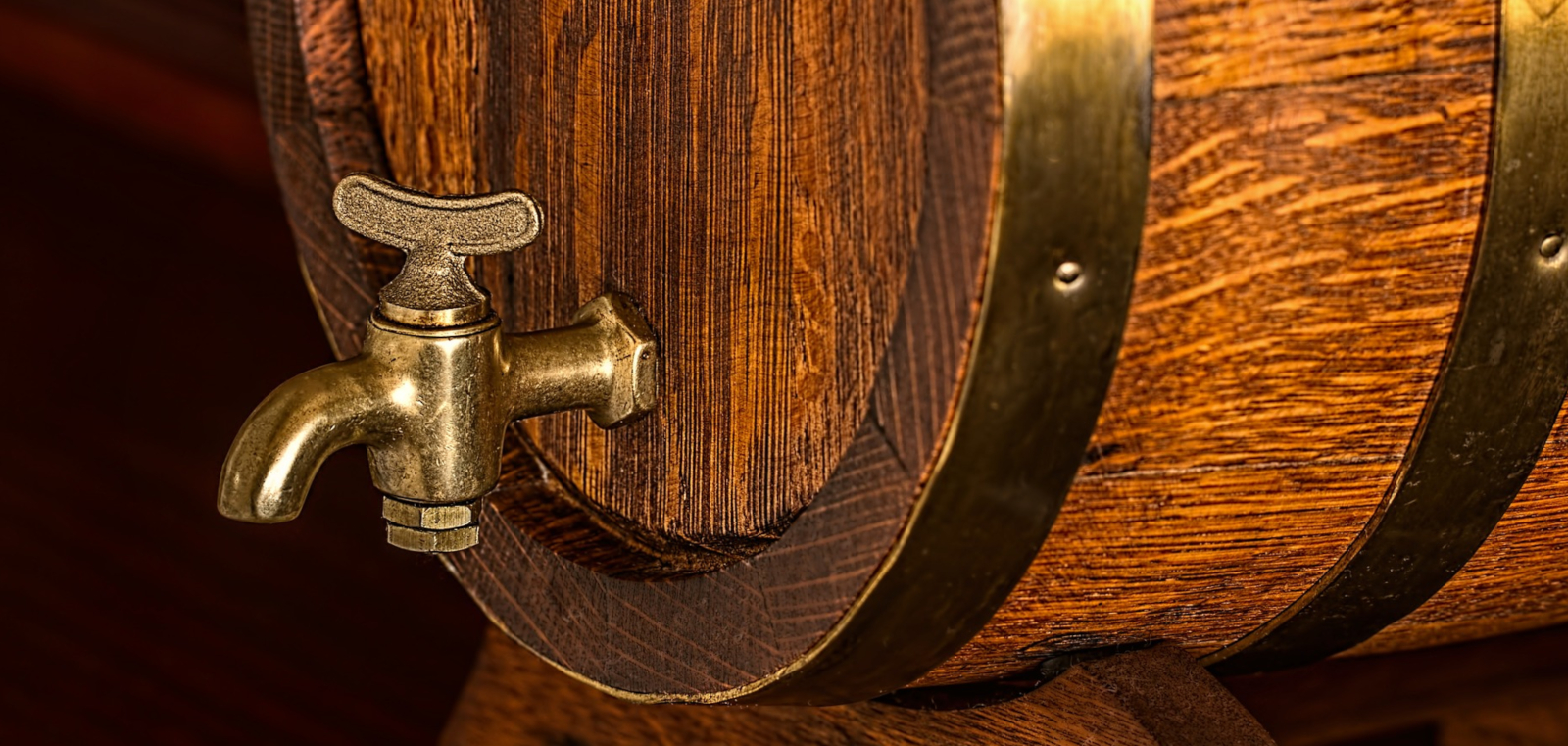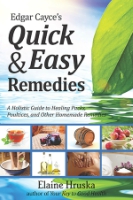Right outside my office door is a popular place for visitors to the A.R.E. Health Center and Spa - a mini charred oak keg. I enjoy hearing visitors’ questions and reactions as they try out this Cayce respiratory remedy. Some visitors purchase a keg from the spa, and some leave with our handout of instructions on how to make one at home. Others return daily to use the keg during their symptoms. The staff keeps handy a stack of little paper plates with holes in them so there will be no transfer of germs.
As far back as 1922, the Cayce readings mentioned using fumes from a wooden keg (usually filled with apple brandy) for sinus infections and lung conditions like tuberculosis and bronchitis. Antibiotics were not readily available to civilians until after WW II, so there were few remedies for treating respiratory diseases. Inhaling fumes from a wooden keg was a welcome tool to fight one of the top causes of death during Cayce’s lifetime. The readings directed that the inside of the keg be burned or charred to form purifying charcoal, and most of the readings instructed that the keg be filled with apple brandy:
We would take a wooden container - preferably one charred within... In same, place one gallon of pure apple brandy, see? … Keep where evaporation will be continual; that is, keep in a warm place, see? so corked that none of the gases from the evaporation escape, save in the space above the liquid… Inhale this into the lungs at least two to three times each day. Begin with only two to three such inhalations, but these properties in this manner enter the lung in such a way and manner as to meet the needs of the lungs in clarifying and in overcoming these conditions; for these act as an antiseptic, as it were, for these portions of the body.
-- Edgar Cayce reading 93-1
One of the brands of apple brandy the readings recommended—Laird’s—is still being produced from Virginia apples today by the original family company located in New Jersey. For those who are thrifty and crafty, another reading described a do-it-yourself version:
We would first prepare as this: We would take one-half bushel of apples. Reduce same to pulp, grinding. Place in a charred container that may be closed entirely, see? and the container should be at least twice as large as the quantity, when pulped. Keep this corked tight, yet keep where the activity of the action through which these will take place will create in the vacuum above same that activity of the fumes or gases from same. At least twice each day, after these have stood for three days, inhale into the lungs the gas only as comes from this fermentation in the charred container, see?
-- Edgar Cayce reading 218-1
Though one reading (218-1) eloquently championed the use of apple brandy, “Remember: Man's fall was eating an apple. He may be resuscitated through same, properly used,” other readings recommended different inhalants. Several people were advised to treat their airway problems with the fumes of grain alcohol mixed with the essential oils of eucalyptus, juniper, and turpentine (pine), a mixture that Baar Products now makes from the Cayce recipe and sells as Inspirol®. Both alcohol-based inhalants share the same mechanism of action described in reading (176-1), with the alcohol serving as “both an antiseptic and a destructive force for tubercular bacilli in the lung.”
Like many holistic and pharmaceutical treatments, however, too much keg use can be a bad thing. Though there has been little research into inhaling spirits, a 2007 review article by Dr. Joseph Sisson1 points out, “(T)he impact of alcohol on lung airway functions is dependent on the concentration, duration and route of exposure.” Overuse, as in frequent recreational use for intoxication, causes airway inflammation and damage to the delicate lung tissues. Most states2 have banned alcohol vaping because of these concerns. The article also explains the positive effects of inhaled alcohol, “(B)rief exposure to mild concentrations of alcohol may enhance mucociliary clearance (decrease congestion), stimulate bronchodilation (airway opening) and probably attenuate the airway inflammation and injury observed in asthma and COPD (chronic obstructive pulmonary disease usually caused by smoking).” The limited recommended keg use in the Cayce readings seems to fit into Dr. Sisson’s description of beneficial inhalation—the readings certainly did not advocate that the keg be used as a preventive or daily treatment. For the recipients of the many readings about charred oak kegs and for the A.R.E. members and visitors using the keg outside my door, this Cayce remedy is a helpful addition to their respiratory healing. Come try it out!
- https://www.ncbi.nlm.nih.gov/pmc/articles/PMC2081157/
- https://www.nytimes.com/2006/10/08/us/08whiskey.html?fta=y&_r=0








